See also
- ↑ "Utetheisa". iNaturalist. Retrieved 11 November 2020.
Rattlepod is a common name for several plants and may refer to:
Rattlepod is also a common name for tiger moths of the genus Utetheisa, [1] although the word "rattlepod" may not appear in common names at the species level.
Sycamore is a name which has been applied to several types of trees, but with somewhat similar leaf forms. The name derives from the ancient Greek συκόμορος (sūkomoros) meaning "fig-mulberry".
Cypress is a common name for various coniferous trees or shrubs of northern temperate regions that belong to the family Cupressaceae. The word cypress is derived from Old French cipres, which was imported from Latin cypressus, the latinisation of the Greek κυπάρισσος (kyparissos). Cypress trees are a large classification of conifers, encompassing the trees and shrubs from the cypress family (Cupressaceae) and many others with the word “cypress” in their common name. Many cypress trees have needle-like, evergreen foliage and acorn-like seed cones.
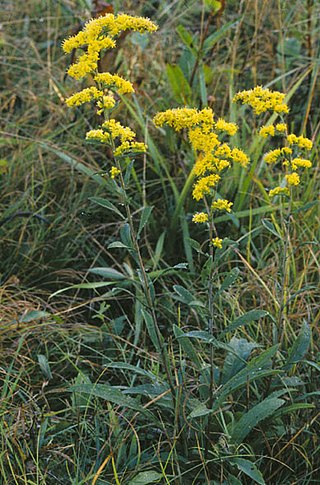
Goldenrod is a common name for many species of flowering plants in the sunflower family, Asteraceae, commonly in reference to the genus Solidago.

Reed is a common name for several tall, grass-like plants of wetlands.

Crotalaria is a genus of flowering plants in the family Fabaceae commonly known as rattlepods. The genus includes over 700 species of herbaceous plants and shrubs. Africa is the continent with the majority of Crotalaria species, which are mainly found in damp grassland, especially in floodplains, depressions and along edges of swamps and rivers, but also in deciduous bush land, roadsides and fields. Some species of Crotalaria are grown as ornamentals. The common name rattlepod or rattlebox is derived from the fact that the seeds become loose in the pod as they mature, and rattle when the pod is shaken. The name derives from the Ancient Greek κρόταλον, meaning "castanet", and is the same root as the name for the rattlesnakes (Crotalus).
Rattlebox is a common name for several plants which have inflated fruits in which the seeds may rattle:
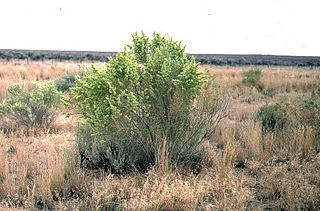
Saltbush is a vernacular plant name that most often refers to Atriplex, a genus of about 250 plants distributed worldwide from subtropical to subarctic regions. Atriplex species are native to Australia, North and South America, and Eurasia. Many Atriplex species are halophytes and are adapted to dry environments with salty soils.
Poison oak refers to two plant species in the genus Toxicodendron, both of which can cause skin irritation:
Rattlebush is a common name for several plants in the legume family with inflated fruits in which the seeds may rattle:

White spruce is a common name for several species of spruce (Picea) and may refer to:
Rattleweed is a common name for several plants and may refer to:
Camphorweed is a common name for several plants and may refer to:

Utetheisa pulchella, the crimson-speckled flunkey, crimson-speckled footman, or crimson-speckled moth, is a moth of the family Erebidae. The species was first described by Carl Linnaeus in his 1758 10th edition of Systema Naturae.

Utetheisa ornatrix, also called the ornate bella moth, ornate moth, bella moth or rattlebox moth is a moth of the subfamily Arctiinae. It is aposematically colored ranging from pink, red, orange and yellow to white coloration with black markings arranged in varying patterns on its wings. It has a wingspan of 33–46 mm. Moths reside in temperate midwestern and eastern North America as well as throughout Mexico and other parts of Central America. Unlike most moths, the bella moth is diurnal. Formerly, the bella moth or beautiful utetheisa of temperate eastern North America was separated as Utetheisa bella. Now it is united with the bella moth in Utetheisa ornatrix.
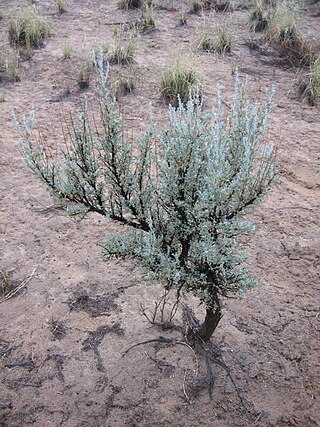
Sagebrush is the common name of several woody and herbaceous species of plants in the genus Artemisia. The best known sagebrush is the shrub Artemisia tridentata. Sagebrushes are native to the North American west.
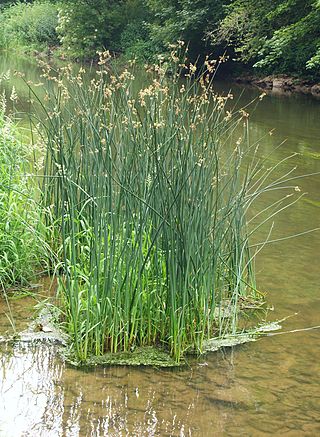
Bulrush is a vernacular name for several large wetland grass-like plants

Jerrold Meinwald was an American chemist known for his work on chemical ecology, a field he co-founded with his colleague and friend Thomas Eisner. He was a Goldwin Smith Professor Emeritus of Chemistry at Cornell University. He was author or co-author of well over 400 scientific articles. His interest in chemistry was sparked by fireworks done with his friend Michael Cava when they were still in junior high school. Meinwald was also a music aficionado and studied flute with Marcel Moyse – the world's greatest flutist of his time.
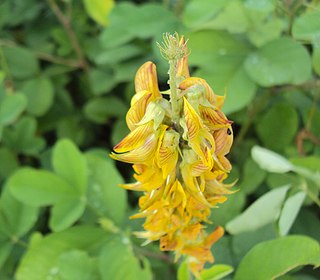
Crotalaria pallida, commonly known as the smooth crotalaria, is a species of flowering plant within the family Fabaceae.
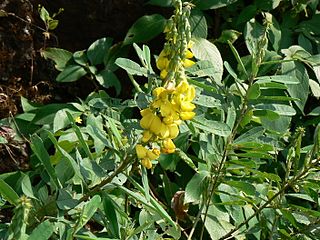
Crotalaria spectabilis, the showy rattlebox or showy rattlepod, is a species of flowering plant in the pea family Fabaceae. It is native to the Indian Subcontinent, southern China, and Southeast Asia. It is a perennial herb that grows up to 0.6–1.5 m (24–59 in) tall. It grows in montane grasslands. It was introduced to most of the world's tropics and subtropics and is now a serious agricultural pest species. It is toxic to livestock, causing liver damage.